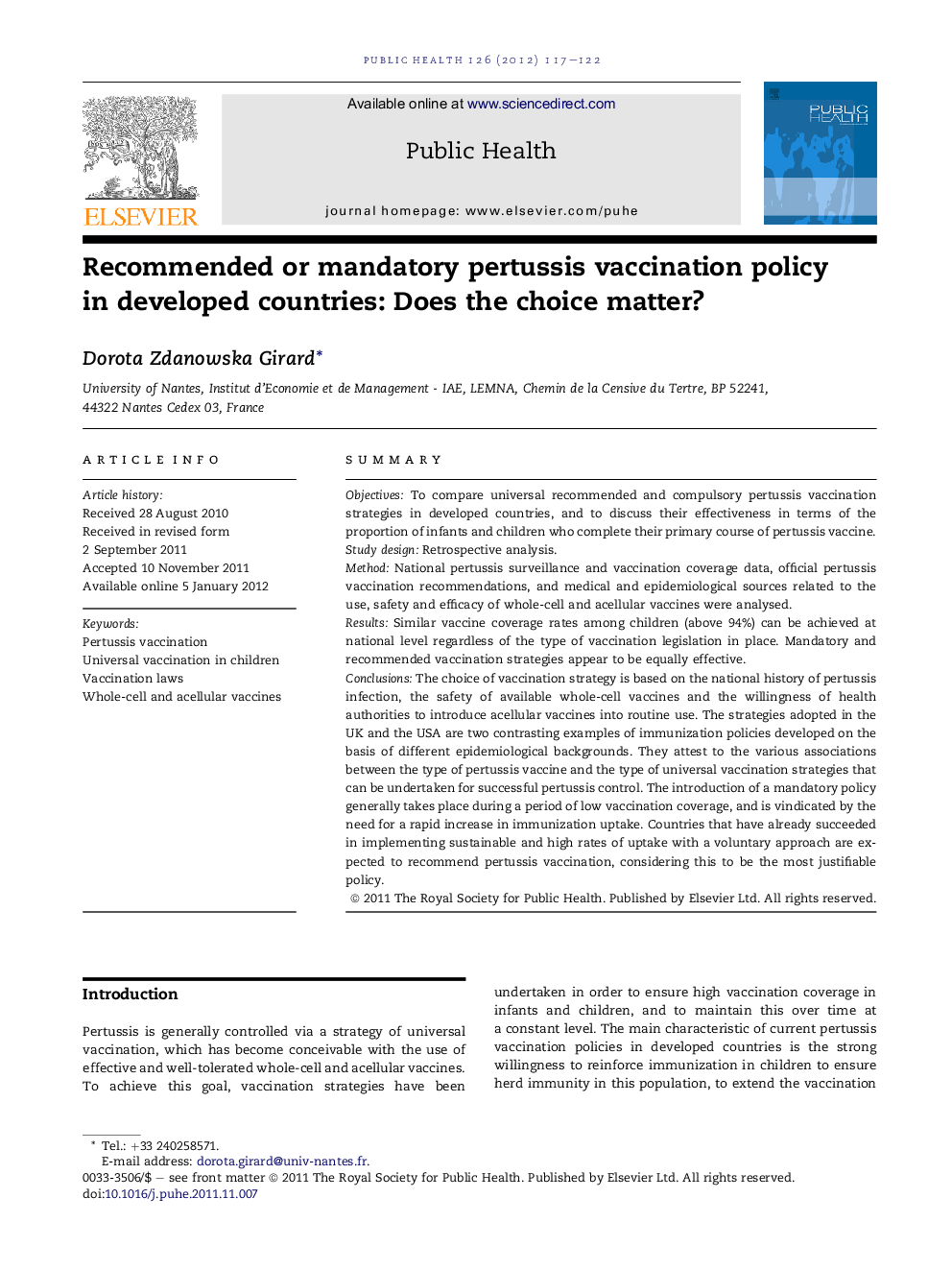| Article ID | Journal | Published Year | Pages | File Type |
|---|---|---|---|---|
| 1087890 | Public Health | 2012 | 6 Pages |
SummaryObjectivesTo compare universal recommended and compulsory pertussis vaccination strategies in developed countries, and to discuss their effectiveness in terms of the proportion of infants and children who complete their primary course of pertussis vaccine.Study designRetrospective analysis.MethodNational pertussis surveillance and vaccination coverage data, official pertussis vaccination recommendations, and medical and epidemiological sources related to the use, safety and efficacy of whole-cell and acellular vaccines were analysed.ResultsSimilar vaccine coverage rates among children (above 94%) can be achieved at national level regardless of the type of vaccination legislation in place. Mandatory and recommended vaccination strategies appear to be equally effective.ConclusionsThe choice of vaccination strategy is based on the national history of pertussis infection, the safety of available whole-cell vaccines and the willingness of health authorities to introduce acellular vaccines into routine use. The strategies adopted in the UK and the USA are two contrasting examples of immunization policies developed on the basis of different epidemiological backgrounds. They attest to the various associations between the type of pertussis vaccine and the type of universal vaccination strategies that can be undertaken for successful pertussis control. The introduction of a mandatory policy generally takes place during a period of low vaccination coverage, and is vindicated by the need for a rapid increase in immunization uptake. Countries that have already succeeded in implementing sustainable and high rates of uptake with a voluntary approach are expected to recommend pertussis vaccination, considering this to be the most justifiable policy.
